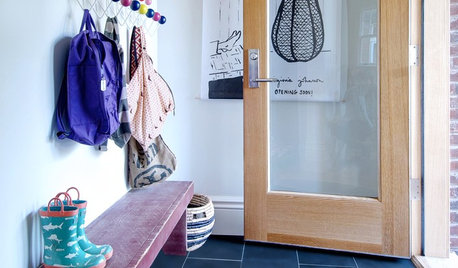UMass Extension Landscape Message April 25, 2014
"Winter moth eggs have mostly hatched now in Rhode Island and in eastern Massachusetts. The tiny caterpillars are currently within the swelling buds of their host plant and feeding. There is virtually nothing that can be done now to treat this insect. However, once the buds open and the caterpillars become exposed, there are many options for treating this pest. Insecticide products that contain Spinosad as the active ingredient are commonly used for winter moth caterpillars, as well as many other lepidopteran caterpillar pests. There are also numerous pyrethroid products labeled for caterpillars but these tend to have a harsher effect on beneficial insects and mites."
Report by Robert Childs, Extension Entomologist - Retired, Stockbridge School of Agriculture, UMass, Amherst
"Spring Seeding
We have had many inquiries so far this year about planting turfgrass seed in the spring. The short answer is that spring seeding is almost never preferable to seeding within the ideal late summer/early fall planting period. The best period tends to fall between about the third week of August and the third week of September for most areas of Massachusetts, depending on prevailing weather conditions in any given year. Later in the season temperatures begin to moderate, weed pressure is greatly reduced, and ample time exists for grass to mature before winter arrives.
Proper site and seedbed preparation is as important for planting in the spring as it is at any other time of the year. One of the challenges of spring planting is that snow cover can persist beyond the time that conditions become otherwise favorable for turfgrass establishment. Even after the snow melts, lingering soil moisture can impede site preparation, especially on sites that have chronic drainage or moisture problems. Such factors that push back the seeding date serve to further shrink the already short period available for sufficient establishment.
On the other end of the narrow spring planting window is the onset of stressful warmer and drier conditions typical of summer. Summer turf performance, and in some cases survival, is all about good roots - deep and extensive roots in particular. Cool season turfgrasses commonly experience significant root dieback when soil temperatures rise substantially. One of the best ways to buffer against this phenomenon is to have a robust root system in place heading into summer. Grasses planted in spring are all but certain to have a comparatively immature and therefore less resilient root system when summer arrives. Grasses planted in late summer/early fall, on the other hand, have the balance of the growing season plus the duration of the following spring to develop an adequate root system and in turn are much better positioned for long-term success.
Another significant factor is that young grass seedlings germinating in spring are forced to compete with the unavoidable flush of annual weeds, especially crabgrass. Several of these annual grass species have warm-season physiology that affords them a competitive advantage that gradually increases as temperatures rise. The disturbance created during planting can further aggravate weed problems by bringing buried weed seeds to the surface; in fact avoidance of soil disruption in the spring is a primary tool in the management of summer annual weed invasion. Spring planting also takes several effective approaches for preemergence annual weed control off of the table, as most of these options inhibit the emergence of both desirable and undesirable grasses.
While spring renovation is the norm for some intensive management programs, spring turf establishment in most other situations is advised only when extenuating circumstances exist. Slice overseeding or light cultivation for the repair of winter damage or bare spots are usuallywarranted, but decisions to purposefully cultivate and 'open soil' in wholesale fashion should be carefully evaluated. If it can wait, by all means, wait. In instances where planting just can't be put off or large areas of bare soil are present (e.g. as with new construction), a temporary cover of quick-establishing species such as perennial ryegrass that can be renovated or overseeded in the late summer to a more permanent turf is often a workable solution. In other cases, spring establishment from sod can be a good option as well.
When in the tough position of seeding in the spring, the best guideline is to seed as early as possible after the site can be reasonably prepared. Water is also critical; irrigation must be applied frequently in the absence of rainfall to keep the site moist but not wet. As far as managing weed pressure is concerned, the only two current preemergence herbicide options that can be used safely in conjunction with seeding are siduron (TupersanTM) and mesotrione (TenacityTM). Be sure to read and follow all label directions carefully when choosing to apply an herbicide at the time of seeding."
Report by Jason Lanier, Extension Educator, UMass Extension Agriculture & Landscape Program

















claireplymouth z6b coastal MAOriginal Author
Related Professionals
Citrus Heights Landscape Architects & Landscape Designers · Barrington Hills Landscape Architects & Landscape Designers · Clemson Landscape Architects & Landscape Designers · Richmond Heights Landscape Architects & Landscape Designers · Wakefield Landscape Contractors · Bound Brook Landscape Contractors · Brownsville Landscape Contractors · Paterson Landscape Contractors · Raleigh Landscape Contractors · Rockville Landscape Contractors · Saint Paul Landscape Contractors · Woodbury Landscape Contractors · Del Aire Decks, Patios & Outdoor Enclosures · Rantoul Decks, Patios & Outdoor Enclosures · South Lyon Decks, Patios & Outdoor Enclosures